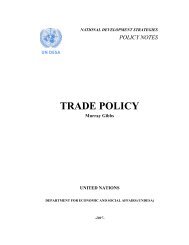Best Policy Practices
Best Policy Practices
Best Policy Practices
You also want an ePaper? Increase the reach of your titles
YUMPU automatically turns print PDFs into web optimized ePapers that Google loves.
<strong>Best</strong> <strong>Policy</strong> <strong>Practices</strong><br />
tions – defines the project goals (e.g. “at least X per cent of<br />
savings”, etc.) and thus invites potential bidders to take part in<br />
a contest of ideas and best value for money.<br />
The client and the ESCO sign a contract – usually over<br />
a term of seven to twelve years. The core elements of the<br />
contract are the level and structure of the investment, the level<br />
and sharing of the savings implementation, and the control<br />
and maintenance of the energy-saving measures. If savings do<br />
not materialize, the ESCO pays the difference, not the client.<br />
To ensure savings the ESCOs usually also offer staff training<br />
and long-term maintenance services.<br />
Links: www.eurocontract.net and www.energyservicescoalition.org/resources/<br />
whatis.htm<br />
Results achieved: Guaranteed savings vary from 10% to 30%.<br />
Since 2005, 23 projects were supported by different partners<br />
and countries in Europe. Model documents and guidance<br />
are available through Berliner Energieagentur and project<br />
partners.<br />
22
















